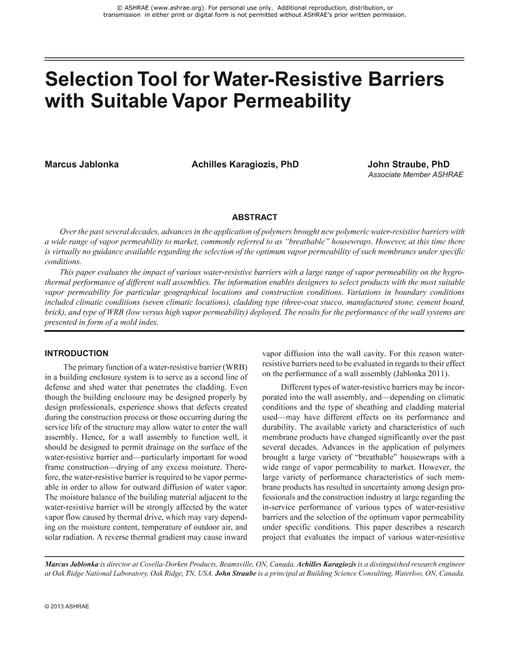-
-
Available Formats
- Options
- Availability
- Priced From ( in USD )
-
Available Formats
-
- Immediate download
- $16.00
- Add to Cart
Customers Who Bought This Also Bought
-

Moisture-Related Durability of Walls with Exterior Insula...
Priced From $16.00 -

Selection Tool for Water-Resistive Barriers with Suitable...
Priced From $16.00 -

Thermal Performance Evaluation of Attic Radiant Barrier S...
Priced From $16.00 -

Monitored Performance of Ultra-High Performance Residenti...
Priced From $16.00
About This Item
Full Description
We analyzed the building envelope and duct system airtightness of US single-family detached homes built since 2000, wherethe data was part of the Lawrence Berkeley National Laboratory Residential Diagnostics Database (ResDB). The airtightnessof homes is compared with the IECC guidelines, which are the basis of many state building codes. A large number of homes areconsidered in this analysis, representing many states: 26,000 building envelope and 11,000 duct system air leakage data. Ouranalysis shows that the majority of US homes built in the past ten years from ResDB are meeting IECC 2009. About 80% of allhomes built since 2000 met the IECC building envelope airtightness guideline of 7 ACH50. Over 90% of the homes met the IECC2009 duct system airtightness guideline of 12 cfm25. However, fewer homes are reaching the 2012 levels, especially in terms ofbuilding envelope airtightness. Only30%of the homes met IECC 2012 building envelope airtightness of 5ACH50 in climate zones1 and 2, and 10% meeting 3 ACH50 in climate zones 3–8. Overall, only 12% of the homes in ResDB met the IECC 2012 buildingenvelope airtightness guidelines. On the other hand, slightly over half of the US homes in ResDB are meeting the IECC 2012duct system airtightness guideline of 4 cfm25. These comparisons of airtightness with respect to guidelines show the current statusof homes built recently in the US. The data presented here are also important for estimating the energy consumption on residentialheating and cooling and the extra cost of energy spent because of air leakage.
Presented at Thermal Performance of Exterior Envelopes of Whole Buildings XII, December 2013





